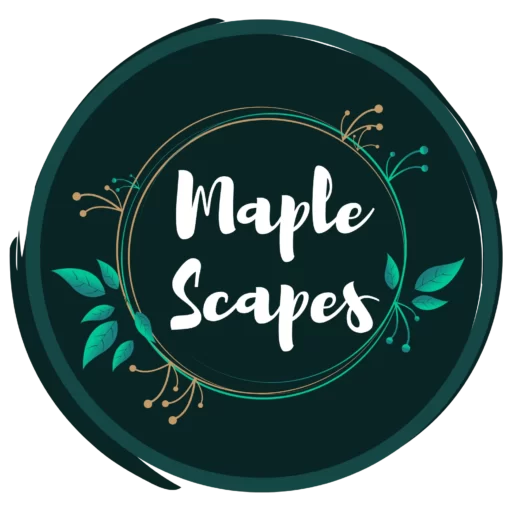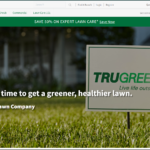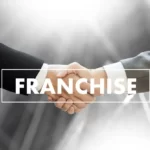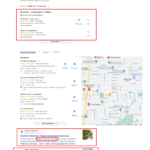Establishing brand awareness, nurturing leads, and fostering customer loyalty demands a strategic approach in the competitive landscape industry.
Landscaping Email marketing is a powerful tool to achieve these goals, offering targeted communication, cost-effectiveness, and measurable results.
This guide provides a comprehensive framework for cultivating a thriving email marketing program for landscaping businesses.
Why email marketing for landscaping businesses?
Email marketing is a form of digital marketing that uses email to connect with potential customers, raise brand awareness, build customer loyalty, and promote marketing efforts.
You can typically send a commercial message to a group using email. In its broadest sense, every email sent to a potential or current customer could be considered email marketing. It is a more evolved, digital form of traditional direct mail marketing.
Though often ignored, Email marketing is a cost-effective way to:
- Generate new landscaping leads (outbound mailers, newsletters)
- Improve lead conversions (drip campaigns, nurture mailers, re-engagement campaigns)
- Encourage Retention and repeat order purchases (newsletters, promotional offers, milestone emails)
- Improve your services (Feedback, survey emails)

As you read this article, you will be able to understand how to use email marketing best to achieve the goals mentioned above for your landscaping business.
Essentials of lawn care email marketing
Now that you have an overall goal, you must look at several other things before hitting that send button.
Understand that the basis of all emails is contacts. You need a recipient to whom you’ll send your email.
Contacts and email lists
You need contacts to create an audience and send personalized emails.
How you acquire those contacts is a different game altogether.
Buying an email list from a third party is rarely a good idea. Buying email lists in bulk and sending them mass emails might land your business in legal trouble.
Why? Mass email techniques are non-personalised, non-relevant emails that get in the spam folder faster than you can see your campaign to completion.
There are very specific laws against sending bulk emails to contacts who have not opted to receive any emails from you. See Canada CASL, the US CAN-SPAM act, and Australia’s Spam act.
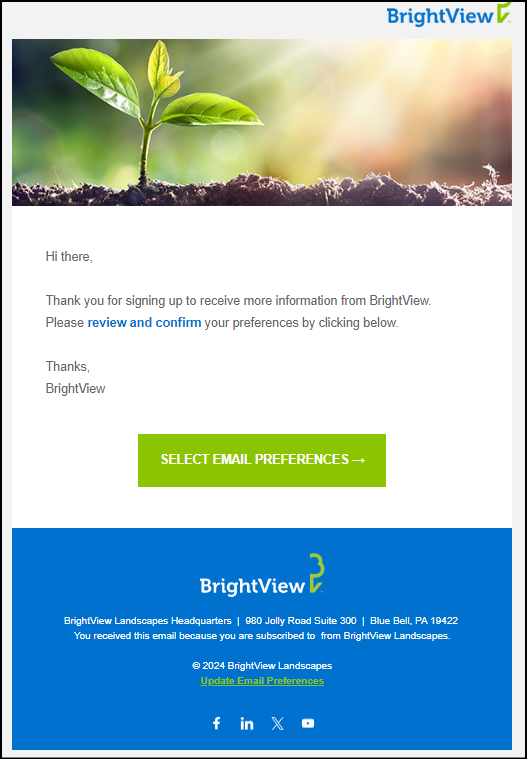
Always aim to acquire your contacts through legitimate strategies and get their permission to email them.
Some helpful ways you can build your landscaping marketing email list
- Acquire contact details from your landscaping website. Use a pop-up, offer newsletter signup form, or lead magnet landing pages.
- Use your leads from offline marketing, such as in-person sales, leads captured in events, leads from property managers, etc. You can use this list to get them to opt in to your emails in your first email.
- Use social media or search ads to acquire contact information from those who have expressed interest in your brand. Include an optional checkbox to get permission for newsletters.
- You can get them to opt in if you’ve got a database of people or your former prospects.
- Get lead information from your referral programs. Your affiliates can get you leads from discount or partner pricing programs.
- You can acquire leads using giveaways, gamification, and contests on social media or online groups and communities (Your target audience should be present there).
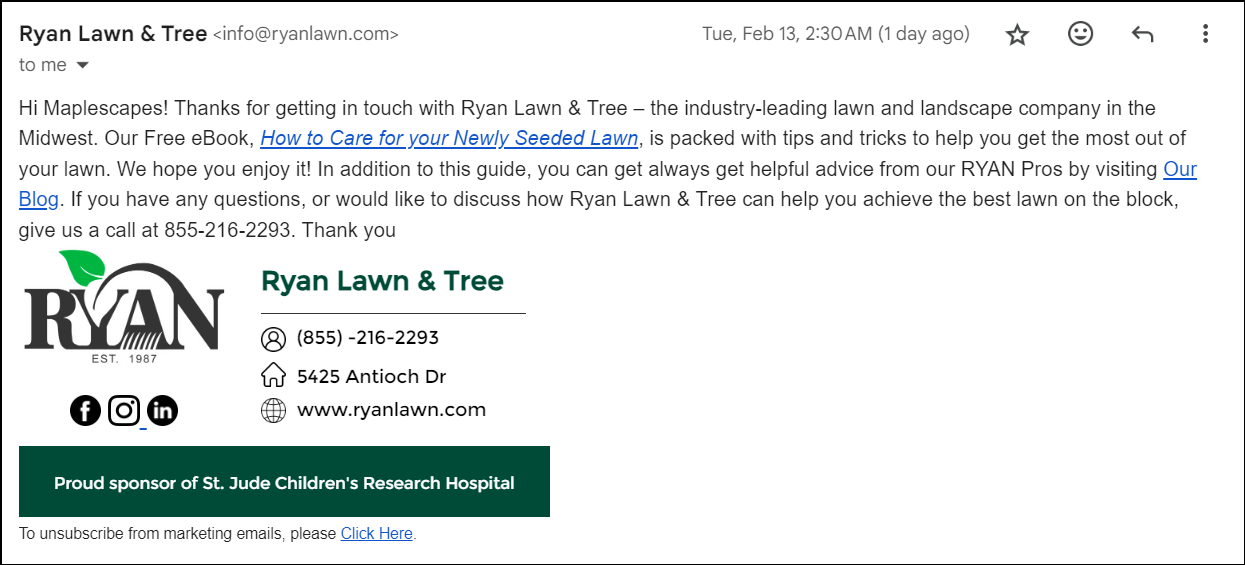
Tips to keep your email lists working for your marketing campaigns
Segment your contacts: Enrich your data as much as possible so you know exactly to whom you send your emails. This would help make your emails more personalized and help with the open and click rates. If you do not know about these email metrics, you can learn them here.
Keep your contacts in the email list fresh: Prevent contact decay and regularly clean your lists so that all your emails are deliverable to the recipients.
Tag or categorize your contacts: Map the actions of each prospect/customer touchpoint with your service. Tag your contacts in multiple ways. For example, add tags for prospects and customers, your service category, how they were acquired, and location.
Email types
There are multiple options when publishing emails. Some content works well as standalone emails, while others work better in a series (e.g., welcome sequence, sales cadence). The correct choice will depend on your overall strategy.
Here are some examples to get you thinking about your options:
Transactional emails
Transactional emails are those necessary emails you send to communicate important account-related information to your contacts. If a person is signing up with you, you must automatically include them in this segment.
The following email types come in this category:
- Billing and invoices
- Changes to your terms of service or company policies
- Updates to account information including password reset
- Onboarding emails
- Appointments
- Feedback and survey emails

Promotional emails
These are offers, discounts, and coupons you release to encourage more customers to sign up with you directly.
- Gifts or a value add bundled with your core service
- Promotion offer with a limited-time validity
- Coupon code emails to offer a discount
- Referral credit offer
- Reminders to the validity or recharge subscription packages
- Company announcements

Re-engagement emails
Re-engagement emails are used when you want to remind your contacts that your offerings are available for grabs. These emails aim to start the conversation with your contacts again or to get reorders.
- Holiday and seasonal emails (landscaping and snow removal)
- New service offerings
- Reorder your last service package
- Awards that you won
- Your new industry association
- That event you are going to
- Press releases
- Product/platform tutorials
- Top service picks

Nurture emails
Nurture emails help bring your prospects down the funnel. The ideal audience for these types of emails is those interested in your service but not ready to buy yet. The goal of these emails is to nurture your relationship with your contacts. If they start to trust you and keep you in their minds, they’ll likely buy from you.
- Curated content emails
- Testimonial and review emails for social proof
- Milestone emails (your business anniversary, customer account milestone, etc.)
- Educational emails
- A day in the life of your employee/contractor
- Industry trends or roundups

Other email types
- Request for referrals
- Thank you emails
- Invite for collaborations or partnerships
- Reminder emails
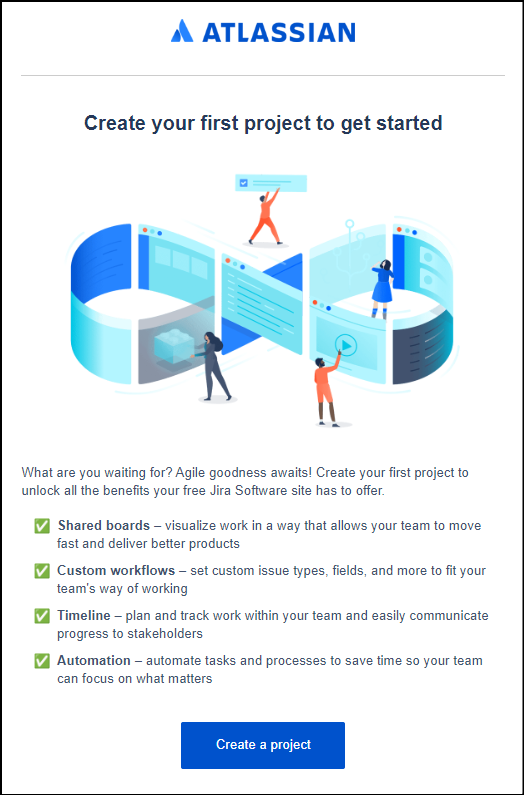
Cadence and drip sequence
You might have heard about a drip campaign, sales cadence, or welcome sequence. Learn how to use them to achieve your lawn care email marketing goals for your business.
Learn what is an Email cadence and what are drip campaigns here.
The trigger is the most important thing you can identify to make your drips effective.
A trigger in a drip campaign with a defined cadence is either an action or an event. Your email is sent based on a trigger such as on a prospect’s birthday (event) or when a lead checks out your landscaping service but doesn’t call you (action).
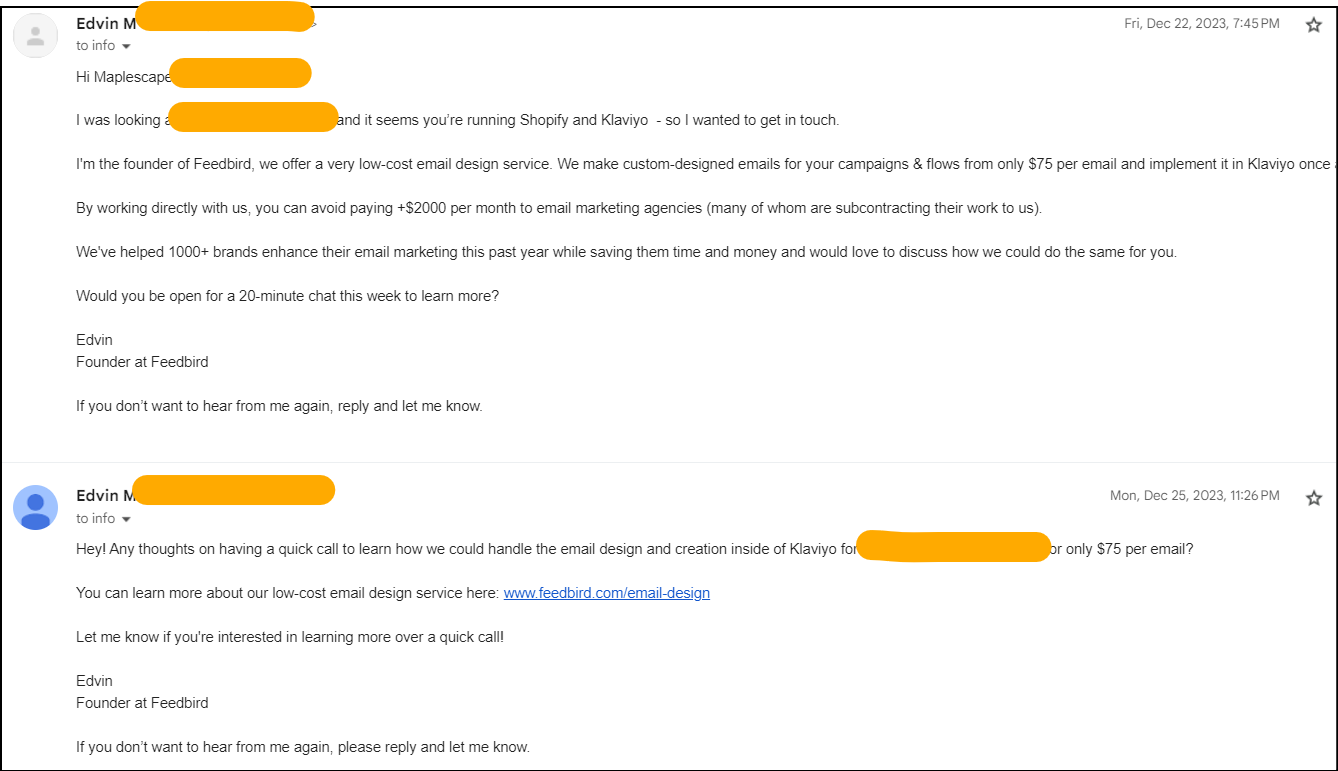
Examples where email sequences make sense:
- Welcome sequence and onboard drips to let your customers know how they can fully utilize what you have to offer. (Think lawn maintenance or subscription packages, We love landscaping subscriptions.)
- Subscription renewal emails.
- Retargeting engaged leads to move them down the funnel. Engagement could mean either they click links in your email regularly or you’ve shown them a demo.
- Blog subscriber conversion
- Drip to collect reviews and feedback. They can easily be attached to one of your check-in emails or calls.
- If you have a SaaS platform or an app, incorporate landscaping drip campaigns at user drop-offs to re-engage users.
Please note that your email cadence will differ based on the lead you have. You’ll nurture top-of-the-funnel leads first. For leads with higher purchase intent, you can attach an email drip to your sales cadence to get them to sign up.

Now that you have a sender (or email list) along with information on what you can send, it’s time to make sure that content from your topic is complemented with context and design.
Content, context, and design
Content and design matched with the proper context can do wonders for your email campaign.
Content
For email content, you need to focus your efforts on the following elements:
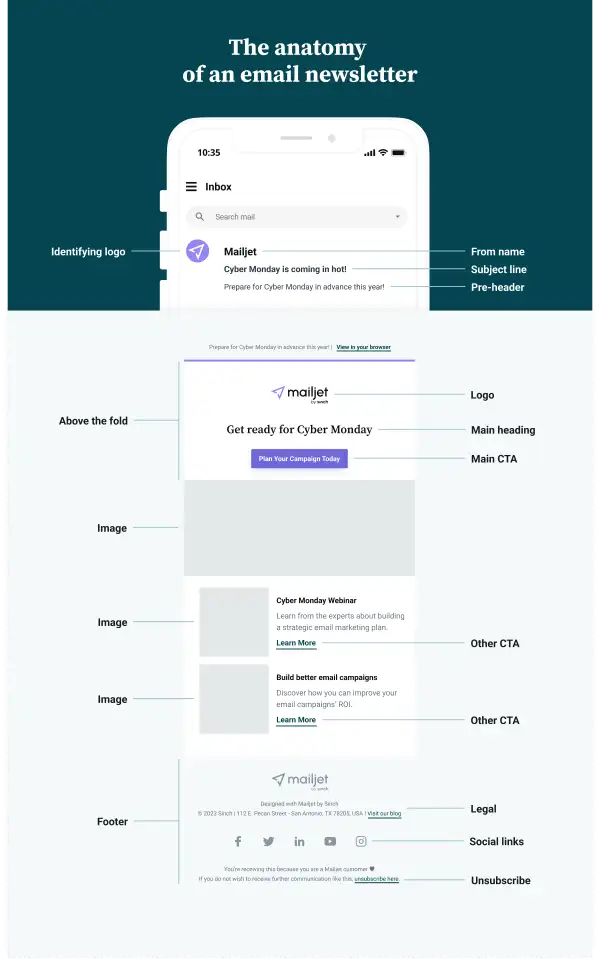
Not diving deep into the elements (you can identify and understand the elements from the image), we’ll dive right into the prominent practices for success:
- Optimize your subject and preview text (Pre-header) for maximum opens. This is where you make your first impression with your email.
- Hook: Start with a hook that ensures your email recipient is hooked and reads the rest of the email. The most common hook starts with a problem you know your contact is looking to solve.
- Email copy: Always consider your objective before writing your email copy. Why do you want to send an email to a lead? What would they learn after reading, and what do you want them to do after they have read it? These fundamental questions will help you write a relevant copy to the recipient and help you get more engagement. Every copy should be directed towards a particular action. Such as clicking on a CTA to buy from you, calling you, or learning more about a particular topic.
- CTA: Include a single CTA and keep it short, simple and visually appealing.
Design
Design is another important element of your email.
There are 2 simple ways you can think about email design. You can keep it a text-only email (with a CTA button or a graphic-heavy footer) or add visual elements to your email to complement your copy.
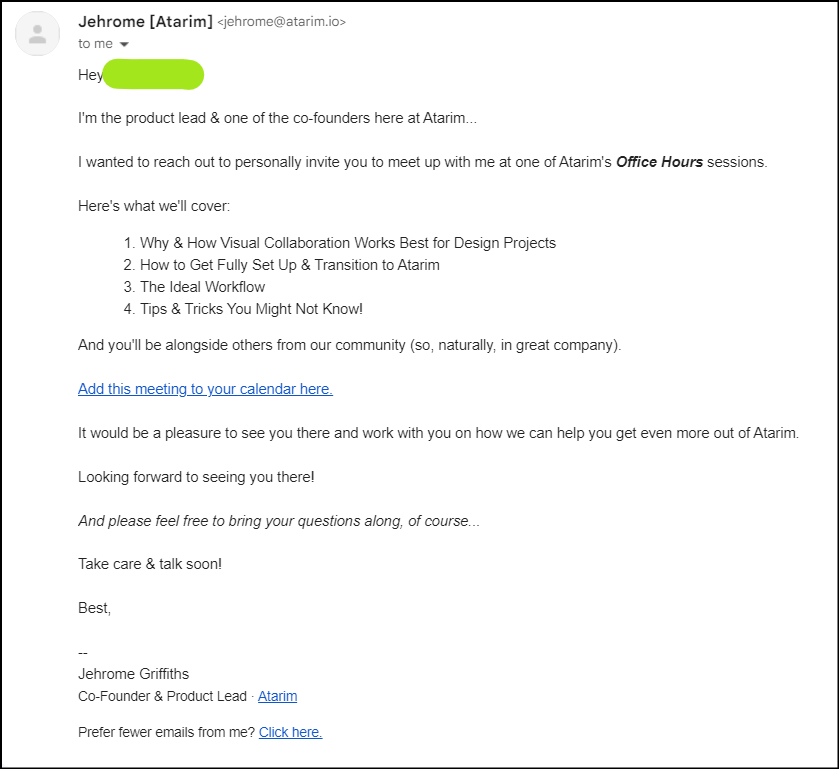
Remember that email design is not only crafted to make your email look cool, it is also done to compliment your email copy.
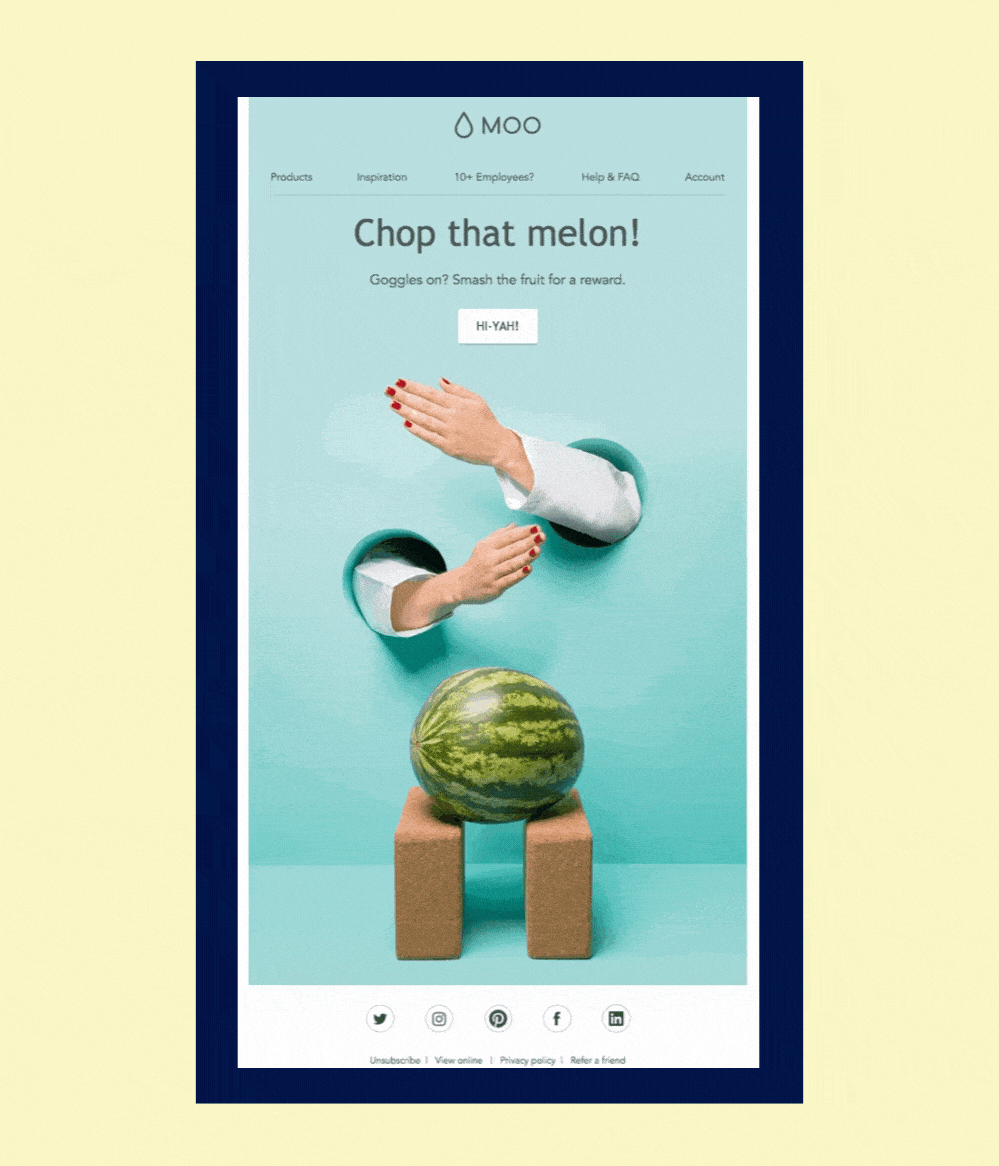
In addition to using your brand identity in design, the artwork should help readers instantly realize what your email is about.
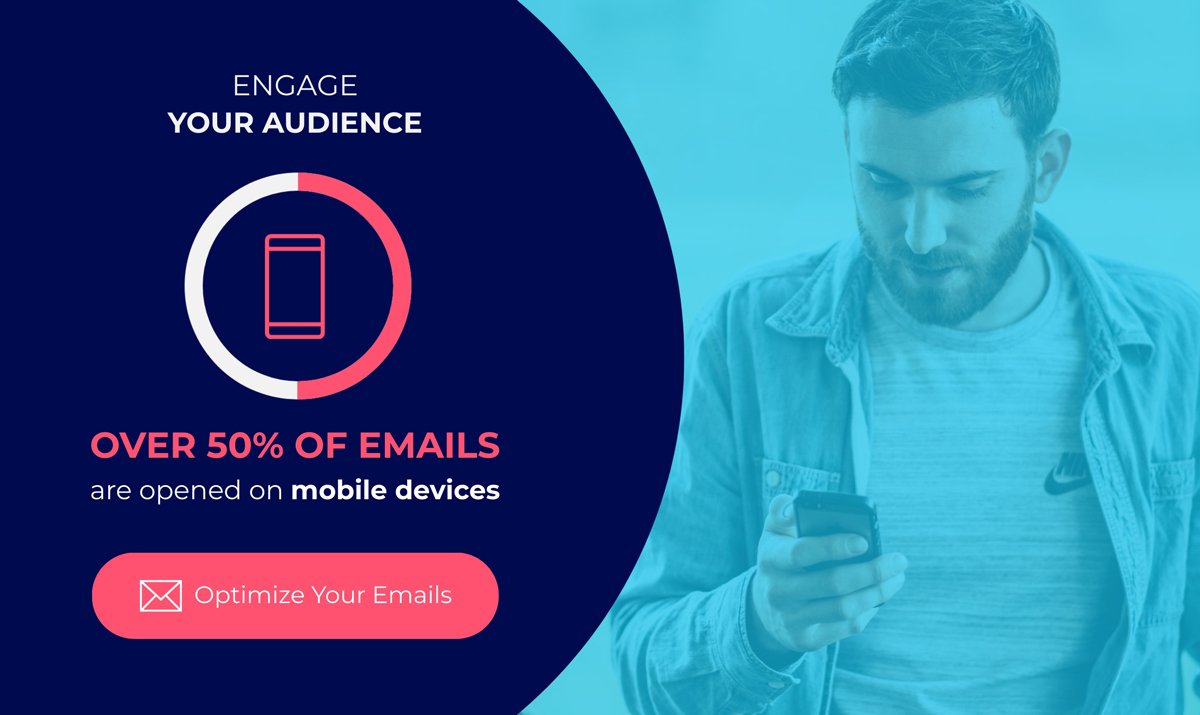
Context
Context is at the heart of any email in your campaign. The context defines your success with your emails because it is with context that your excellent content and email design get noticed and get the proper engagement.
Saul explained it much better. Context in email marketing is delivering the right message to the right person at the right time.
The more you know about your audience (who might be/might not be interested in getting their lawn mowed yet), the better you can personalize it for your email recipients. Focusing on context helps you tailor messages to your prospect’s preferences, behaviours, and needs.
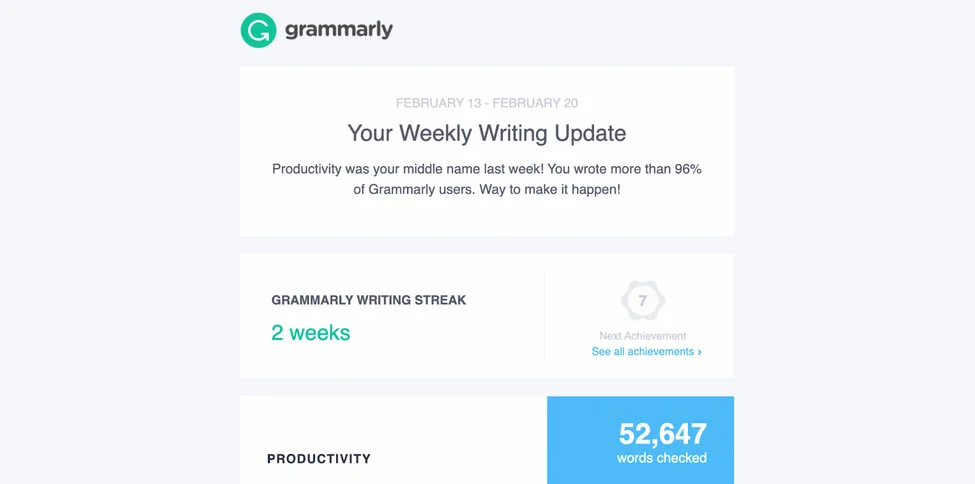
Imagine sending a newly launched lawn mower feature to a senior. Do you think the content would be of any use for them?
What if you turned that email around to explain how seniors can use the lawn mower and which choice would be best for them (robotic mower vs diesel one that requires pulling a jammed rusted chord to start)? Wouldn’t that be more helpful?
This is one example where context can make all the difference between your email being read, you get a call, and your email being moved to the archive, or for worse, sent to spam.
The only secret sauce here is “knowing your audience”. When you know who your contact is, you’re better able to deliver the right message to the right person at the right time.
Landscaping Email Marketing Strategies
The best way to start email marketing immediately for your landscaping business is to create a simple strategy and revise it over time to improve your results.
How to create your email marketing strategy
Every good strategy starts with a goal.
Define what your goals are.
If that is too broad, consider what you want to achieve from marketing in the near, short, and long term.
Defining Goals
- Do you want to target new service areas? Or have you launched a new landscaping service offering and want to get leads? (Short to medium-term goal)
- Are you looking to acquire new customers? (Short term goal)
- Do you want to establish yourself as an industry leader in a few selected landscaping services? (Long term goal)
If you are not ready to think about these goals right now, that’s okay.
As a stakeholder in your business, you would know some problem areas.
Let’s use those problems to create goals and then get you thinking about a strategy for achieving those goals.
Thinking about the problem
Think of some problem areas in your business.
- You acquire new landscaping customers often but are not able to retain them for long, which is affecting your bottom line and your long-term expansion plans.
- Your marketing department is getting you landscaping leads, but your leads are not ready to commit yet.
- Your customers forget about you the minute they hang up the phone.
- When you still have a wide portfolio, you can only sell a few services. Your resources take a lot of money, while revenue from those unused services is not great.
and so on…
These are some of the examples of issues you might be facing along with your day-to-day.
When you have a good list of issues that you want to resolve, start thinking about how you can use lawn care email marketing to help you achieve some of your solutions.
It is worth noting that you need to consider your prospects’ problems as well as your issues. So, if you want to send emails to your existing customers, you need to know what problems they face regularly within landscaping.
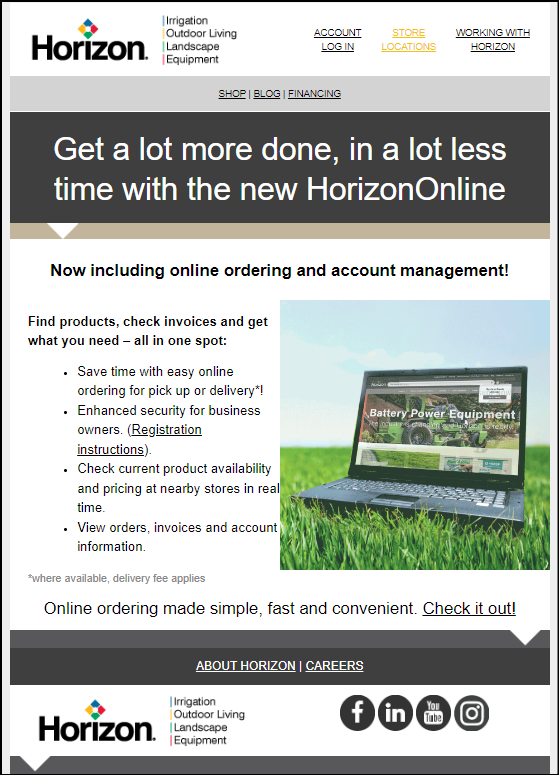
Creating an email marketing strategy
After you have the data, such as your contact information, a problem you’re trying to solve, and know some email types, the email strategy creation becomes easy.
Use this framework and the example to create a simple email marketing strategy for your lawn care business:
What – The purpose of your email
Maplescapes Landscaping wants to start an email marketing campaign to engage existing residential customers with a newsletter and motivate them to avail of our high-quality services again.
Why – Your problem statement
Maplescapes wants to improve its customer retention and increase the repurchase of its services from existing customers.
Who – Who will be the audience of this email campaign
The audience for this campaign will be our existing residential customers from 2015. From this set, we’ll segment customers more likely to engage in our emails and repurchase. We’ll also use contacts who are decision-makers or can influence the decision-makers.
We know that our existing customers have little time to focus on their lawns. They know the value of maintenance. They only need a push to increase the value of their property with our services.
How – How will you achieve your goal
To engage existing customers and allow for repurchases, we’ll start a weekly newsletter with valuable and helpful information on best practices for lawn maintenance and solving day-to-day problems related to lawn care, pest management, and tips for enhancing their outdoor living space.
For email campaign delivery, Maplescapes will use our existing email provider (Mailmodo), source the contacts from our existing CRM (Hubspot) and create an email list in Mailmodo.
For recipients, we’ll filter out contacts who generally do not engage in our transactional emails and who have repurchased our services in the past three months.
Maplescapes will also refresh and enrich its contact data using a third-party data enrichment provider to gain context and a better understanding of our context.
The design and content will be in-house with excerpts sourced from our team of professionals who are experts in their field.
Context: We know that our customers are from this region __, where they have warm-season grass and x grass types. Our initial advice will focus on keeping one’s lawn looking green and fresh.
Details – more details for your strategy and execution of it
Content topics:
- Seasonal Lawn Care Tips: Tips on maintaining lawns during different seasons, mainly focusing on the care needed for warm-season grass and x grass types prevalent in your customer’s region.
- Pest Management Advice: Information on common pests that affect lawns in our customers’ regions and how to manage them effectively.
- DIY Landscaping Ideas: We offer simple and cost-effective DIY landscaping ideas that our customers can implement (or call us) to enhance their outdoor living space.
- Professional Insights: Share insights and advice from our professionals on various lawn care and landscaping topics.
- Success Stories: Showcase before and after stories of our recent projects to demonstrate the effectiveness of our services.
- Promotions and Offers: Announce any special promotions or offers for existing customers to motivate them to use our services again.
Cost:
The data enrichment (optional) will cost us $200 for 5000 contacts. This will be a one-time cost.
Design and content will be in-house. We’ll incur around $40-$60 for each newsletter according to the cost per hour for our content writer and designer (an average of $50 per hour if we hire freelancers). We will need 4 newsletters each month and 24 newsletters for 6 months.
Mailmodo already costs us $70 per month, so there will be no additional charges for email newsletter campaigns.
Total cost for the next 6 months: $1400
Timelines and targets:
We’ll send one newsletter a week and alternate between mornings and evenings to optimize the opens and clicks. We’ll start with weekends since that is when a residential decision-maker will most likely open their email. We’ll also try other days in a week to optimize our delivery.
The target will be to get 2 service calls from each newsletter. We’ll target 18 service calls in 6 months and a revenue of $9,000.
The expected return from this email campaign is 642%

Landscaping Email marketing strategies for your landscaping business
Here are just some of the email marketing strategies you can start with.
We’ll create a spin-off post to share some strategies successful businesses have used to grow. Subscribe to our newsletter to be notified when that post goes live on Maplescapes.
- Send monthly/weekly newsletters to your existing (Current and past) customers. Keep it highly valuable for your audience.
- Use segments of your audience to send special offers, and new service announcements to upsell your services.
- Invite customers to a relevant landscaping event you’re attending to connect with them using email. Make sure to do it while planning your next lawn care event.
- Early bird discounts for seasonal maintenance. Give your past customers an irresistible offer for work they need to get done anyway (Deicing, seasonal contracts).
- Offer free maintenance with a service. You’ll not earn from the maintenance, but you’ll get a customer who will buy that service from you and will remain your customer until you keep doing maintenance.
- Use your leads that are not ready to buy from you, but can be your good customers someday. Nurture them through content that builds trust and credibility with you.
- Create a separate list for contacts who are not the direct decision makers for buying your services, but can influence that decision with their referrals. Use that list to create an email campaign drip where they do not call you to buy, but influence others(Property managers) to contact you.
- Updated a page, added a new service page or published a new blog on your website? Email it to people who would find it helpful for your website marketing strategy.
Tracking performance
You need to measure some prominently used metrics to evaluate your email campaign performance.
A good email marketing solution will help you track the number of email opens and clicks, including who clicked what link, conversions, bounces, unsubscribers and more.
Software might not be able to help you with some things—revenue from emails, ROI, calls you get because of your emails, and website interaction after a user lands on your website from an email link.
Some of these you can calculate yourself—revenue, calls, conversion, ROI, etc. For example, revenue would depend on the service that a customer buys from you, and conversion would depend on what action you consider a conversion—downloading an ebook from you, creating an account on your platform, or booking a free consultation call.
For user behaviour on your website, you can use UTM parameters along with your URLs and use Google Analytics/PostHob to see their activity. Our lawn care website creation guide provides more details on analyzing user behaviour.
Keep a record of how each email is doing in your campaign or drip in an Excel sheet so you can improvise and do better in the next set that goes out to your audience.
Side note: email opens are a vanity metric and don’t work on iOS users. Due to privacy features, emails sent to them might be seen as open by default.
You can use a free Hubspot template for tracking your campaigns. (Delete what you do not require and add some metrics and targets that you’ve created.)
Want to know more?
Contact us to create your email marketing strategy at ZERO cost.
We’ll need these details from you:
- A business problem you’re facing that you think email can solve.
- About your business – Your products and service, areas you serve, and more. The more non-sensitive details you can give us, the better (Context in email marketing is the key)
- What do you expect to get out of the campaign?
Why we’ll help you with email marketing strategy:
Our experts at MapleScapes like a challenge!
Please note that we’ll only create a comprehensive strategy to help you achieve your business growth goals. You will be responsible for executing the strategy.
